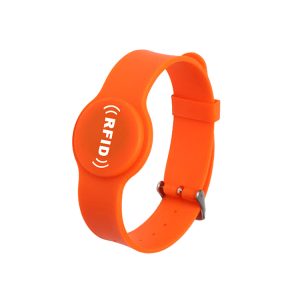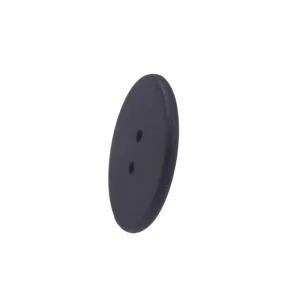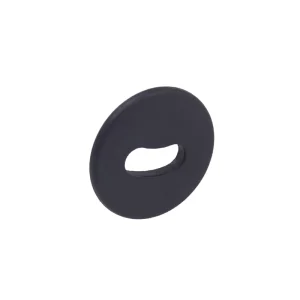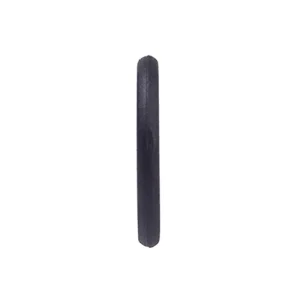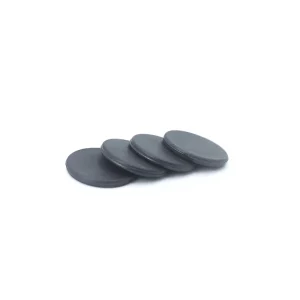125KHz RFID technology has a wide range of application scenarios, including access control, logistics management, vehicle management, production process control, animal management, special application market and card identification market.
What is 125 kHz RFID?
125KHz RFID technology is a wireless electronic identification system that operates at frequencies less than 125KHz. This low-frequency RFID technology is vital in many industries, and its unique technological properties provide efficient and easy solutions for a wide range of application situations.
The reading distance for 125KHz RFID is quite short. This implies that low-frequency RFID technology may be effective in circumstances where close-range and precise identification is needed. Low-frequency RFID can enable precise and reliable data transmission over short distances, whether for access control systems, fleet management, or animal identification.
Low-frequency RFID technology has a relatively poor data transmission speed, but it is very stable and reliable. This implies that low-frequency RFID technology may give a more trustworthy option in circumstances requiring long-term stability or strong data security.
Furthermore, the storage capacity of 125KHz RFID is limited, although this does not preclude its use in a variety of applications. For application situations requiring the storing of modest quantities of data, low-frequency RFID technology is suitable. Furthermore, with proper optimization and design, low-frequency RFID tags may accomplish efficient and precise data reading and transmission.
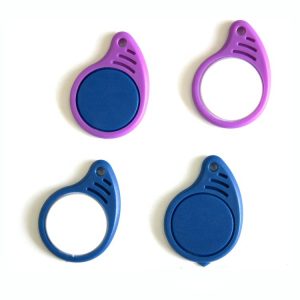
What is 125KHz RFID used for?
- entry control: Low-frequency RFID technology is used to regulate entry to homes, workplaces, corporate facilities, and other public areas. Users put the low-frequency 125khz keychain near the card reader, and once the card reader receives the information, access control may be implemented.
- Logistics management is another important application sector for low-frequency RFID, including the purchase, delivery, outgoing, and sales of commodities. These goods may be monitored and controlled using low-frequency RFID technology, hence increasing logistical efficiency.
- Vehicle management: Low-frequency RFID technology may enable intelligent vehicle management in locations such as automotive dealerships, parking lots, airports, and ports, improving vehicle safety and efficiency.
- Production process control: In production sites, factories, and other contexts, low-frequency RFID may be used to manage and track production processes, ensuring that they run smoothly.
- Animal management: Low-frequency RFID is also commonly employed in animal management, such as the care of pets, animals, and poultry. For example, RFID chips may be implanted to control pets, whilst ear tags or implantable tags can be used to handle animals.
- Low-frequency RFID is very useful in livestock management. For example, in China, where cattle and sheep breeding is encouraged by laws, certain areas have implemented cow and sheep insurance plans, with RFID tags used to certify whether deceased cattle and sheep are covered. In addition, the use of low-frequency RFID in pet management is expanding significantly. For example, Beijing advocated using dog chips as early as 2008, and in recent years, numerous localities have adopted management policies governing dog chip injections.
- Low-frequency RFID is utilized in specialized applications, including buried tags and wafer fabrication operations in the semiconductor industry. little-frequency RFID offers little electromagnetic interference and is suited for usage in environments with strong electromagnetic requirements.
- Card identification market: Low-frequency RFID is also widely used in the card identification market, such as access control cards, 125khz key fob, car keys, etc. Although this market has had a high time, it continues to ship a big number of items each year owing to its vast number of basic consumers and robust supply chain.
Can phones read 125KHz?
The ability of a mobile phone to scan 125KHz RFID tags is determined by the presence of the necessary hardware and software. If the mobile phone has an NFC chip that enables low-frequency communication, the associated antenna and circuit, and application software that can handle low-frequency RFID tags, it can read them. However, since the reading distance for low-frequency RFID is rather limited, the mobile phone must remain near to the tag while reading it.
Hardware support:
The mobile phone needs to have NFC (near field communication) function, and the NFC chip must support 125KHz low-frequency communication. Most current smartphones have NFC capabilities, although not all NFC chips allow low-frequency communication. As a result, it is vital to establish if the NFC chip on the mobile phone supports 125KHz.
In addition to the NFC chip, the mobile phone must have the appropriate antenna and circuitry to receive and transmit low-frequency signals. The design and configuration of these hardware components will impact the mobile phone’s ability to scan low-frequency RFID tags.
Software support:
To use NFC, the mobile phone’s operating system must support it. Additionally, application software capable of handling low-frequency RFID tags must be loaded. These programs can read the data from low-frequency RFID tags by connecting with the NFC chip.
Some third-party application software can also enable mobile phones to read low-frequency RFID tags. These applications are often downloaded from the app store, installed on the mobile phone, and then configured and utilized in accordance with the program’s instructions.
Notes:
Since the reading distance of low-frequency RFID is relatively short, the mobile phone needs to keep a close distance from the tag when reading the low-frequency RFID tag, usually within a range of several centimeters to more than ten centimeters.
Different manufacturers and types of mobile phones may have different NFC hardware and software support, thus in practical applications, it is important to setup and utilize it based on the mobile phone’s individual scenario.
What is the difference between 125KHz and 13.56 MHz?
Working Frequency:
13.56MHz: This is a high-frequency card with a working frequency range of around 3MHz to 30MHz.
Technical Features:
13.56MHz: The data transmission rate is faster than the low frequency, and the cost is reasonable. Except for metal materials, the wavelength of this frequency may pass through most materials, however it often shortens the reading distance. The tag must be more than 4mm away from the metal, and its anti-metal impact is pretty strong in numerous frequency bands.
125KHz is often used in access control systems, animal identification, vehicle management, and other applications requiring close-range identification at a cheap cost.
13.56MHz: Because of its rapid data transmission speed and relatively long reading distance, it is ideal for applications requiring greater data transmission rates and a specific reading distance, such as public transit payment, smart card payment, ID card recognition, and so on.
![Rfid Tag manufacturer [Wholesale | OEM | ODM]](https://www.fjrfidfactory.com/wp-content/uploads/2024/04/logo.webp)
